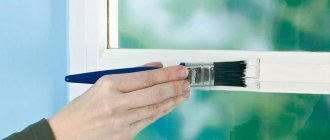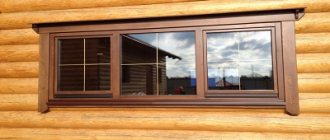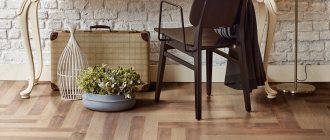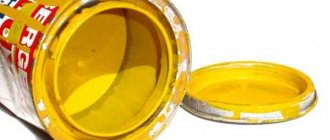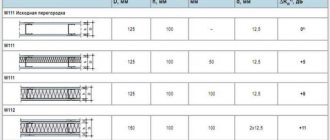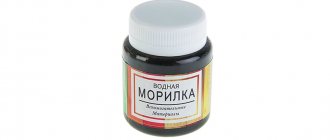Professional mounting foam TECHNONICOL 65 MAXIMUM all-season 1000 ml. Photo Petrovich
Polyurethane foam has a number of positive properties . But polyurethane sealant also has some disadvantages. One of the disadvantages of the material is the need to protect installation seams from the effects of external harmful environmental factors.
Materials for waterproofing plastic windows
After determining the cause of condensation, it is necessary to prepare consumables. The list depends on the task to be accomplished:
- initial window installation;
- repair of joints;
- frame repair.
In the first case, you need polyurethane foam and waterproofing tape. In the second, only tape is enough. In the third, you need to use silicone sealants. Let's look at these materials in more detail.
Waterproofing tape for window
There are 4 main types of waterproofing tapes:
- moisture- and steam-resistant on a self-adhesive basis;
- insulated;
- pre-compressed;
- for external use.
The first 3 types of tapes are used only for interior work. The peculiarity of ordinary waterproofing tape is that it does not allow not only water to pass through, but also air. If the house is built of foam or aerated concrete, use is not recommended. If the joint has voids, a fungus will inevitably form in it, which will begin to destroy the stone. The price starts from 60 rubles per roll of 5 m.
The insulated tape differs from the first option only in that it is covered with a special reflective material, which prevents the penetration of cold from the street and the leakage of heat from the room. Relevant for use in cold regions. The price varies from 80 to 400 rubles. per roll 5 m.
Pre-compressed tape is mainly suitable for foam concrete structures as it allows air to pass through but prevents moisture penetration. In cold regions, it makes sense to use only in conjunction with an external diffuse tape. Price 60-300 rub. per roll 5 m.
Tapes for outdoor use are distinguished by the fact that they are resistant to natural phenomena: rain, snow, sun. However, they only protect against moisture from the street and prevent ventilation of the seams. They are optimally suited if renovations have already been made inside the premises. Price 80-500 rub.
To correctly identify the tape, it is enough to study the GOST standards:
- GOST R 53338-2009 “Vapour-permeable, self-expanding, self-adhesive tapes for construction purposes”;
- GOST 30971-2012 “Mounting seams of junctions of window blocks to wall openings. General technical conditions";
- GOST R 52749-2007 “Window installation joints with vapor-permeable self-expanding tapes.”
Rice. 2. Waterproofing tape for windows
Polyurethane foam
Polyurethane foam is used exclusively at the window installation stage. According to the principle of operation, liquid foam is blown into the cracks between the frame and the wall and begins to dry and expand, filling all the voids. Repeatedly blowing the seams with foam will no longer give the expected result. First you need to remove all the old foam and re-blow it. Only in this case will the waterproofing be done efficiently.
Another undeniable advantage of foam is that it does not harbor insects, bacteria, fungi and other parasites. On the other hand, there is a significant drawback - the foam fades very quickly in the sun and begins to crumble, so the seams must be sealed with waterproofing film.
The choice of manufacturer is not particularly important; pricing ranges from 40 to 200 rubles per jar.
Window sealant
This is a collective name for a whole group of finishing materials. Window sealants are sold in different forms:
- paste;
- tube;
- ready mixture in a bucket;
- dry mixture.
The first two options are suitable for sealing small seams, since they are sold in small volumes and cost up to 200 rubles. Ready-made mixtures are used if the work of installing the sealant will be completed in one go. After opening the can, the sealant dries out and becomes unusable. There are different displacements on sale from 1 to 20 liters. Cost from 150 rub. per liter
The dry mixture is cheaper, on average 300-400 rubles. per kilogram. When diluted, 3-5 liters of sealant is obtained. In terms of physical and operational properties, it does not differ from the finished mixture.
Liquid sealant for windows
Liquid assembly sealant is also a complex group of insulation, which is used both for filling installation seams and for repairing the frame itself, if the rubber on the glass unit has worn out or received mechanical damage.
In general terms, we can highlight the high reliability of these insulations, ease of use and durability. However, their cost is the highest, from 300 rubles. per jar. Clear and white sealants are available for sale.
Rice. 3. Liquid window sealant
Examples of manufacturers
To understand what window sealant to choose from, it is recommended that you familiarize yourself with the manufacturers of each type of product in more detail. A small list - top with manufacturers:
Ceresit .
Offers silicone products for sealing seams and voids. The base also contains antifungal substances, which is considered a plus. The compositions adhere well, are easy to clean, but the downside is that there is no adhesion to rubber surfaces.- Belinka Belsil . It seals cracks and voids in windows well. It lasts a long time and does not appear black plaque, has antifungal additives. Available in 500 ml volumes, they have good viscosity and are universal.
- Germent moment . Can be used both indoors and outdoors. Cures in 24 hours and is non-corrosive when used on aluminum windows. It has a neutral odor and heat resistance up to +30 degrees.
- KRASS . This manufacturer's compositions do not cause shrinkage during operation. They adhere well to the surface, do not spread, and can be used to create stationary seams. Fire resistant.
- CIKI FIX . The compositions “tightly” hold together various surfaces, which will be a plus. The sealant from this company is considered multifunctional, has good elasticity, does not wash out and does not spread. It also does not emit any odor.
Each manufacturer tries to produce a line of universal sealants, but there are also those who specialize in only one type of material.
TOP best
To understand which sealant is better and more relevant, it is recommended to consider a selection of the most popular materials:
- Acrylic . Among the sealants of this type, we can highlight the products Makroflex FA131. The composition is frost-resistant and covers even small cracks, cost from 128 rubles. KRASS Universal also performed well, its cost starts from 190 rubles.
- Liquid plastic . Compositions with this purpose are suitable for plastic windows; Weiss Chemie Cosmofen 345 at a price of 600 rubles and Cosmofen at a price of 700 rubles have proven themselves best.
- Silicone . There are many candidates for consideration in this category, since most manufacturers necessarily have a composition with silicone in their lines. These are Penosil Universal Silicone for 239 rubles, PENOSIL HIGH Temp for 400 rubles and Soudal fix all high tack for 598 rubles.
These three types of sealants are considered the most versatile and functional. When selecting, it is still worth considering the type of work - external or internal . For example, the Sazi company produces 2 types of sealant: Stiz A and Stiz B. The first is intended for outdoor use, it is available in packaging from 400 grams to 7 kg. Stiz A has an average cost of 40 to 315 rubles. Stiz B sealant is used for interior finishing work. Its average cost is from 250 rubles per 1 kg.
Waterproofing with sealing tape for windows
The window slope always has a through gap at the point where it adjoins the frame. Even if polyurethane foam was used, microvoids still remain through which moisture seeps.
You can find advice:
- plaster the gap;
- cement the joint;
- cover with acrylic.
All these options are not effective in practice. The plaster will get wet and crumble due to moisture, cement allows moisture to pass through well, acrylic may not adhere well to the surface of the slope and microcracks will form.
The most correct option is to use waterproofing tape. The work includes the following items:
- removing dust or large particles of construction debris from the slope and frame;
- degreasing the surface;
- sticking tape.
For the first work we use dry rags. It is enough to wipe the surfaces so that no visible particles of construction debris remain. Next, take acetone or alcohol and wipe the surface of the frame and slope. Then we carefully unwind the insulating tape, separate the protective film from the adhesive base and apply gluing. The width of the tape should be distributed in half, so that there are equal parts of insulation on the wall and frame.
This type of work is classified as finishing; it is used after the actual installation of the window, if during operation there are problems with moisture getting into the room.
Rice. 5. Waterproofing with sealing tape for windows
It should be noted that the adhesive base cannot be wet, otherwise adhesion to the frame and wall will not occur and the tape will soon fall off. There is no need to seal it additionally. This not only will not improve the effect, but on the contrary, it may lead to the tape starting to come off under the influence of plaster, acrylic or other material used to decorate the slope seam.
Sealing joints indoors
To implement this construction task, it is necessary to use the same technologies. To achieve optimal results, you can use aesthetically pleasing drywall. This material will hide foam seams from prying eyes, and small slabs can be protected with emulsion or covered with wallpaper.
There is only one drawback - drywall is susceptible to high humidity, which is why it is not intended for the street side of the building. The material can be easily attached to the surface using standard size dowels and self-tapping screws. A craftsman can create a truly ideal surface with his own hands at an affordable price. Once the panels are in place, they should be coated with a quality primer for optimal adhesion to the upcoming finish.
Important! Drywall sold today can be processed in any way, but at the first stage you need to fill the cracks, holes, and screw caps.
To install drywall, you need to build a durable profile made of natural wood. If the walls are smooth, then you can get by with classic lathing. In this situation, the panels are simply placed on a special glue, which greatly simplifies and speeds up installation. Thanks to this, during many years of use, users will not encounter various unpleasant moments.
Otherwise, leaks, drafts, the growth of ice crusts, as well as uncontrolled growth of mold on those surfaces adjacent to the frame and wall opening cannot be ruled out. The standard service life of a foam joint is 17 years if all construction procedures were carried out correctly. But the final figure depends on the factory, operating conditions, as well as the degree of compliance of the completed construction work with established standards.
Using putty inside the house
Installation features
The tape is applied both before fixing the window block in the opening, and on already installed structures. The first option is more convenient in cases with the installation of external insulation.
Let's consider the algorithm for using tape insulation using the example of gluing pre-compressed sealing tape (PSUL) and internal GPL-S with an additional strip of double-sided tape:
- We prepare the opening. If there is an old window unit, we dismantle it as carefully as possible, without causing unnecessary damage. After dismantling, we level the surfaces adjacent to the future structure and clean them of foreign contaminants.
- We perform a test installation of the block in the opening, temporarily fixing it. This is necessary to mark the edge of contact between the walls and the window, so that when gluing the tape is hidden behind the outer slopes.
- We measure the window block. In accordance with the obtained dimensions, we cut PSUL for gluing on the top and sides of the frame; we prepare diffuse tape to isolate the area where the molding profile is attached.
- We do the same with GPL-S (internal slopes) and butyl rubber tape (for the window sill profile). The material is measured for each side with an allowance of 10 cm to form corner joints.
- We apply the tape, gradually removing the protective layer from the adhesive surface of the PSUL. We glue GPL-S to the inside of the window profile using a strip of double-sided tape (we do not remove the protective film from the main adhesive surface at this stage).
- We fix the window in the opening. We wedge it, and then fasten it with anchors or using mounting plates. We fill the seams with polyurethane foam.
- After complete polymerization of the foam and rough preparation of the inner surface of the walls, we fix GPL-S on them (remove the protective paper and glue it to the slopes).
It should be remembered that the tape must be selected in accordance with weather conditions. When working in winter, it is possible to glue only material intended for use in low temperature conditions.
Puttying process
Wait until the foam has completely expanded and dried. When ready for use, it has a wave-like shape and often excess foam appears in unusual points and positions. It will not be possible to hide such fragments with plaster, so they must be removed first. For these purposes, excess foam is cut off slightly deeper into the wall in order to use putty.
The polyurethane foam should be cut no earlier than 12 hours after application, but it is better to check the drying time. They are indicated on the can.
Before applying the plaster, apply regular masking tape around the areas of upcoming work to protect the clean surface that does not need any finishing from stains. Remove the tape after the plaster has been completely applied and dried.
Features of using window sealants ↑
Window sealants are a dime a dozen on the construction market. They are used to seal frames, glass, etc.:
- Silicone sealants. The most common material that is made on the basis of silicone rubber. The name “silicone” is apparently given for convenience. Due to their simple production and standardization, they are in great demand. Depending on the substance that ensures vulcanization, silicone sealants are divided into two types: neutral and acetate. Neutrals are well applied to smooth (frames) and porous surfaces (concrete or brick), which makes them suitable for sealing external seams when installing windows. This material practically does not emit toxic substances during vulcanization. It is characterized by high adhesion (bonding) to glass, wood, ceramics, porcelain, PVC, enamel, aluminum and almost all painted surfaces, and also retains its properties at temperatures ranging from -50 °C to +180 °C.
Acetate sealants should only be applied to smooth surfaces, such as glass. Their strength is higher than that of neutral ones, however, during vulcanization they release acetic acid, which requires good ventilation of the room. Sometimes acetate sealants are called universal.
- Acrylic sealants. Designed for glass putty. During installation, they are used to protect the mounting foam from moisture, since the vapor permeability of these sealants is quite low. They are resistant to low temperatures and bond well with many building materials, including wet surfaces. However, they are not suitable for resin or bitumen surfaces or gaps where water often enters.
- Polysulfide or thiokol sealants. Used in a wide temperature range, they are highly elastic, so they are suitable for many materials. They are fluid masses with a density of 1270-1300 kg/m3 and a viscosity of 10 to 60 Pa. To improve the quality of the connection with porous materials, thiokol sealants are used together with primers.
- Polyurethane sealants. They are the most inexpensive, but are characterized by increased heat resistance, which is excellent for cold coatings: concrete and brickwork. Resistant to acids, oils and weather conditions.
As for liquid plastic, it is a one-component adhesive based on white dissolved PVC. It does not change its color over time, is durable (up to 15 years) and has excellent adhesion to polyvinyl chloride. Resistant to ultraviolet radiation and temperature influences.
Popular questions
Protection of assembly seams when performing individual works is especially important. Therefore, next we will consider options for protective coatings
What to seal inside on windows, under the windowsill
Plastering when installing windows allows you to hide traces of foam, insulate the frame and create a smooth surface. Puttying and subsequent painting and wallpapering is a popular solution when arranging the space under the windowsill.
Moisture-resistant plasterboard 12.5 mm Knauf 2500x1200 mm. Photo by Leroy Merlin
Also, to make glass blocks complete, several methods are used to help beautifully design the slopes :
- PVC panels are actively used after the installation of windows. Plastic panels are sold ready-made. All the performer needs to do is cut off the element required to the length and fix it. Such work will not take much time and will not require any special skills. PVC panels are not afraid of moisture, frost, and household chemicals. The honeycomb structure provides good sound insulation. Low weight does not create a load on the base and facilitates installation.
- Sandwich panels are a material of two or three layers of plastic, between which there is insulation: expanded polystyrene, mineral wool, fiberglass. Installation does not require complex equipment or a solid foundation. Installation can be carried out on a profile structure and on a slope.
- Drywall is easy to cut, install and plaster. Moisture-resistant material with anti-fungal impregnation is suitable for window slopes. As a result, the structure will not collapse under the influence of high humidity and condensation.
- Wooden panels. For a wide space, it is recommended to choose plywood or lining. For standard size openings, they are decorated with panels and boards.
How to cover the outside from the sun, ultraviolet, rain
Putty compounds that are applied with a spatula from bottom to top.
Paint or varnishes for exterior use. The best choice is an acrylate composition. To obtain better protection, the foam is first treated with putty and then with acrylate paint.
Mounting tape . A temporary measure, the material will be constantly exposed to the weather and after a few months the tape will need to be glued.
Cement-sand mortar with white grout.
Stucco is an excellent option for protecting fireproof foam.
How to seal around the front door inside an apartment
False panels are supplied with factory-produced doors. It is also possible to close installation seams by painting and puttying. Drywall, wooden and plastic panels, and plaster are used to finish slopes.
Usage
You can carry out sealing yourself. When working, you will need a syringe, water and mounting tape. To prevent the slopes from getting dirty, you need to stick construction tape on them. Working areas should be thoroughly cleaned and degreased, but products containing acetone should not be used for PVC windows, otherwise unsightly stains will appear on the surface. Slowly squeeze the sealant into the seam with a syringe. The tool must be held at such an angle that its nose straightens the applied putty. Then everything is smoothed out with a finger dipped in water. The seams should be thoroughly filled with the product so that there are no voids left. Even before the material hardens, its excess is carefully removed from the surfaces, without disturbing the integrity of the sealant applied to the seams. The putty should not be applied to all the seams at once, but should be worked in stages.
What to treat, what to wipe off
After carrying out work using polyurethane foam, it may be necessary to remove excess foam not only from the surface of the seams, but also from nearby structures. In order to wipe off fresh or hardened polyurethane composition from metal surfaces, plastic windows, clothes and hands, folk and special means . Removing foam with a cleaner allows you to get better results. The range of large manufacturers of polyurethane foam also includes high-quality cleaners.
For interior and exterior work
According to their physical and chemical properties, all sealants are divided into two categories - those used for outdoor work and those used indoors.
Sealants used for external work are subject to certain requirements that facilitate their effective resistance to aggressive external environments.
Seal the external seam with sealant
Requirements for external sealants:
- Chemical resistance. Expressed in successful resistance to mold, water and chemicals.
- Successful resistance to mechanical stress. That is, such a sealant must be durable and not be destroyed by external forces.
- Elasticity.
- Good thermal insulation properties.
- Have a dye in its composition or have an easily colored structure.
- When applied, have a condition in which all hard-to-reach places are easily filled (have fluidity).
- Easy to adhere to surfaces (high adhesion).
- Wide range of application and use temperatures.
Requirements for internal sealants:
- No toxins. This is the main requirement for sealants used in residential premises, preventing poisoning of people, animals and the development of allergic reactions.
- Resistant to biological agents, mold and bacteria.
- Moisture resistance.
Why is it important to choose the right one?
The choice of sealant must be approached responsibly, otherwise problems will arise in the further application of the material and its operation.
For example, if you choose the wrong product that is not compatible with different types of surfaces, it simply will not grip two planes.
After hardening, such a composition will move away from the surface and will not perform its stated functions.
Note ! Liquid plastic adhesives are only suitable for plastic windows.
If you choose a white sealant, which may turn yellow over time, the windows will take on an untidy appearance or the material will have to be painted. When choosing compositions with a smell, it is worth taking into account the characteristics of the people living in the room.
To choose the right sealant, you should consider:
- appointment;
- adhesion;
- life time;
- resistance to deformation;
- heat resistance.
It is important to decide for what work the composition will be used - external or internal. It is also necessary to choose sealants with high adhesion. The product must last at least 15 years , must not deteriorate, break or fall off, and must also be heat resistant.
How effective is polyurethane foam against water ↑
Window waterproofing is a strip of material that is used for gluing between the opening and the plastic window before applying foam. Its main function is to protect the window from moisture and leaks. Polyurethane foam suffers the most from water. When wet, its structure is destroyed and its properties are lost. Since for some reason many people are sure that polyurethane foam is a reliable waterproofing material, let’s take a closer look at its properties.
Experts recommend calling it “polyurethane foam,” that is, based on the main material included in its composition. Its main purpose is not installation, but filling the existing joints between already installed structures, bridging voids, cracks, etc. It would be more logical to call it “overlapping foam”.
To protect against moisture and ultraviolet radiation, it is necessary to provide several layers during installation: heat, vapor barrier and vapor permeable
Under the influence of moisture, the foam increases in volume from 50 to 200-250%, hardens within 24 hours in a temperature range of +5-35 ° C and air humidity of at least 60%. It also absorbs moisture well, so it itself needs waterproofing; in addition, it is destroyed under the influence of UV rays. But polyurethane foam has sound and heat insulating properties.
Thus, when waterproofing windows, you should pay attention to other materials rather than relying on polyurethane foam. Properly installed plastic windows protect the room from dust and noise, retain heat and last a long time
If any errors were made in the installation, then after a while a gap forms at the junction of the window and the wall, in which moisture collects and mold forms. Poor quality vapor barrier plays a role
Properly installed plastic windows protect the room from dust and noise, retain heat and last a long time. If any errors were made in the installation, then after a while a gap forms at the junction of the window and the wall, in which moisture collects and mold forms. Poor quality vapor barrier plays a role.
The installation seam needs to be carefully isolated from the ingress of water from the outside.
How to make a high-quality gap between the wall and the window, and not just plastic? It is important to prepare the opening, as well as the window structure. To do this, dirt, dust and other unnecessary elements are removed, oily areas are degreased
Cleaned surfaces should be sanded and, if necessary, cracks should be repaired. During periods of sub-zero temperatures, the surface must be cleared of snow and/or ice. As a result, it should turn out clean and smooth.
Often the installation seam of windows is made of foam plastic, and it can fail for the following reasons:
- exposure to sunlight: polystyrene foam does not “like” them.
- erosion of polyurethane foam due to water ingress.
- Due to the expansion/contraction of windows, erosion can also occur, negatively affecting the window.
You can determine whether the seal is broken by the following signs: when the windows are closed, drafts appear, mold and mildew form on the walls and joints, and leaks form when it rains. They indicate that the window should be well taken care of.
Waterproofing window openings and joints can eliminate these unpleasant consequences. The most popular materials for such purposes are:
- window sealant;
- liquid sealant (or liquid “plastic”);
- sealing tape that is applied to the mounting foam.
Polyurethane foam is an excellent sound and heat insulator
How to use?
Sealing can be done independently. Contacting workers is an unnecessary and unreasonable waste. With instructions, you can complete this job in no time. We will assume that the slopes have already been made earlier, so we will not dwell on this issue.
The algorithm for sealing work will be as follows:
- The first point will be preparing the tools and consumables. During the process, you will need a syringe for applying sealant, a container of water and construction tape.
- The slopes need to be prepared for further work. The essence of the preparation is to stick construction tape, which will protect the window structure from contamination and save us time.
- The working area must be thoroughly cleaned. There should be no dirt or even dust left. It is also necessary to remove the protective film to the smallest fragment. To degrease plastic structures, it is prohibited to use solvents containing acetone. With this treatment, cloudy, matte stains, spots that differ in color and other troubles may appear on the surface.
- Using a construction syringe, slowly squeeze the sealant into the seam area. The tool should be positioned at such an angle that its nose smoothes the material being applied.
- The remaining unevenness and other defects are smoothed out with a finger previously moistened in water. This trick will prevent the material from sticking and provide a smooth surface. The seams must be filled well with putty so that there are no voids.
- Remaining material must be removed from surfaces before it hardens. In this case, it is convenient to use a damp sponge. You must act very carefully so as not to damage the integrity of the sealant applied to the seams.
- There is no need to apply putty to all the seams at once. It's better to work in stages. In this case, it will be possible to avoid hardening of the material before it is leveled and residues are removed.
Average prices for window seam sealing services
On average, window companies offer the same range of seam sealing services; the cost will vary by region and type of compounds used:
- sealing seams from the outside - from 600 rubles per meter;
- sealing internal seams - from 300 rubles per meter;
- seams between frames and slopes - from 300 rubles;
- tightness of double-glazed windows - from 900 rubles.
Some companies offer sealing of facade glazing: such a service will cost 700 rubles per linear meter.
Installation of hydro and vapor barrier for windows
Sealing the space between the window block and the opening includes three main layers: central, external and internal.
The central layer is, in the vast majority of cases, polyurethane foam. It, together with fastening elements, fixes the structure in the opening, protects the room from drafts and heat loss, and also prevents moisture from entering. The polyurethane from which the foam is made quickly deteriorates under the influence of solar ultraviolet radiation and other external influences, which is why it cannot be left open. Therefore, complete finishing implies the use of additional protection.
The outer layer is waterproofing. It is mainly necessary to prevent moisture from entering from the street; in addition, it insulates the opening and protects it from the negative influence of atmospheric factors, including UV radiation. One of the important features of external waterproofing is its one-sided vapor permeability, which ensures proper ventilation of the seam and prevents the accumulation of any liquid in it. The most common materials are specialized tape products, for example, PSUL and sealing liquid mastics.
The inner layer is a vapor barrier. Located on the side of the room, prevents moisture from entering the installation seam
This is especially important when glazing rooms in which there are relatively many vapor accumulations - kitchens or bathrooms. Vapor barriers are characterized by almost zero moisture permeability, have a hygroscopic outer surface, so water does not linger on it and dries quickly
There are also foil types of vapor barriers used for dry finishing of slopes (lining, panels). Most often, tape butyl rubber materials are used for installation; less often, acrylic or silicone sealants are used.
The choice of insulation products depends on the finish and the specific climatic conditions prevailing in the region
However, regardless of these factors, it is important to have all three layers and follow the technology for laying them. Only then can freezing of the seam, destruction of insulation, and the appearance of moisture accumulations on internal slopes be completely eliminated
Why do we need protection?
The use of foam helps solve various construction and repair issues. The composition penetrates deeply into the surface being treated and adheres reliably to it. The connection can withstand significant mechanical and deformation loads. Under the influence of external factors, the installation product loses its qualities. The structure of the sealed composition is influenced to a certain extent by precipitation, but most of all the foam needs protection from ultraviolet radiation. Using a protective layer allows you to:
- Extend the service life of the sealant.
- Prevent moisture from getting on the foam.
- Maintain the integrity of the structure of the substance.
- Prevent the formation of mold and mildew.
- Give the surface a decorative look.
To effectively protect the foam from precipitation, primers and impregnations are used. The substances penetrate deeply into the porous structure of the foam substance and, after treatment, do not allow water to pass through. The sun coloring composition is better placed on the primer layer. A primer alone cannot provide UV protection, but it will prevent moisture penetration.
Kinds
Today, the construction market is represented by a huge selection of glass sealants. Each of them is characterized by individual characteristics and scope of application.
Depending on the basis on which the material is made, two groups of products are distinguished:
- Acetate.
- Neutral.
Sealants belonging to the first group are most often used for structural sealing of double-glazed windows or for glazing windows. As for the second type, it has high adhesion, so it can be used not only for sealing glass, but also for sealing external seams of facades and load-bearing metal structures.
The sealant may differ in the components included in its composition and can be varied.
- Acrylic. This material is considered ideal for sealing windows. It can be used to cover both new double-glazed windows and to seal old ones. The sealant creates a durable layer between the glass and the frame and prevents air penetration. The result is a tight connection that is resistant to moisture and low temperature. Most builders consider this sealant to be universal for working with glass.
- Butyl. It is a construction product that is intended for finishing double-glazed windows. It is mainly used when several glasses need to be joined together. This sealant is characterized by excellent protection and resists well the penetration of moist steam and air into the space between the glasses. It must be applied to the work surface at temperatures above 100C.
- Polyurethane. The material has excellent sealing structure, so it is often chosen for sealing plastic and glass. In addition, it can additionally serve as thermal insulation. After sealing with such a sealant, the surface gains strength and its service life increases. Craftsmen most often use this material for edge joints. Glass reinforced with sealant is not “afraid” of temperature changes, acids and oils.
- Silicone. It is the most common and popular type of sealants. It is used at almost all stages of construction work. The material is also well suited for sealing facade glass, as it has high performance indicators. The popularity of this product is explained by the fact that it is inexpensive and characterized by excellent quality.
Thanks to its unique characteristics and special composition, silicone glass sealant allows you to reliably seal seams and glue materials together. In addition, the product has found its application in auto repair, as it can act as gaskets. Often you have to deal with the problem of sealing seams between glass and coatings such as metal, ceramics or brick. Many adhesives cannot cope with this, but silicone glass sealant will ideally glue all objects, including elastic polymers, plastic, aquariums, and automobile parts.
In addition, the construction product is used to seal seams between various glass objects. In a car, it can be used to strengthen headlights, fixed windows and hatches. However, when using this sealant, you need to remember that it is not suitable for work that requires combining glass with polymers. When interacting with fluoroplastic, polycarbonate and polyethylene, a chemical reaction occurs and the material loses its properties. In addition, this sealant can deteriorate when exposed to gasoline, synthetic oil and ethylene glycol.
Recently, a new product such as polysulfide sealant can be found on the construction market. It does not contain solvents, is produced not in tubes, but in large jars and is used, as a rule, in the manufacture of double-glazed windows. This sealant is produced by mixing polymers with pigments and a structuring agent, resulting in a sealing material that has high resistance to gas, steam and water penetration. As a rule, such a product is used as a secondary sealant.
General information about the product
The sealant for metal-plastic structures is a kind of mass that has plasticity and a self-leveling effect; the product contains a polymer. Thanks to this component, all the smallest excesses that arise after installing the frame can be quickly and easily eliminated.
We are talking about blocking cracks and minor voids; window sealant is often purchased in a white shade so that the mixture, after hardening, completely merges with the frame, and the appearance is as attractive as possible; if the seams are manipulated correctly, the material is quite difficult to notice.
The compactor is capable of solving problems such as:
- Helps the master achieve ideal noise and heat insulation.
- Provide reliable protection against seasonal temperature changes.
- The plastic component of the repair makes the appearance of the slopes more attractive.
When working with the mixture, everyone can notice good adhesion, regardless of the base material; over the years, the high reliability of the adhesion, resistance to mechanical stress and the harmful effects of ultraviolet radiation become obvious.
In what cases will sealing tape help? ↑
To use sealing tape, the surface of the window opening must be perfectly clean and smooth. The distance between the window itself and the opening must be the same everywhere, only then will the waterproofing be reliable. Thanks to the sealing tape, moisture will not get into the seam and window opening, and steam will escape out.
Depending on the degree of compression of the tape, there may be one or another resistance to showers and wind loads. This parameter is usually equal to 20%.
The sealing tape is not attached to the window with fasteners, but is simply pressed tightly into a special groove in the profile
